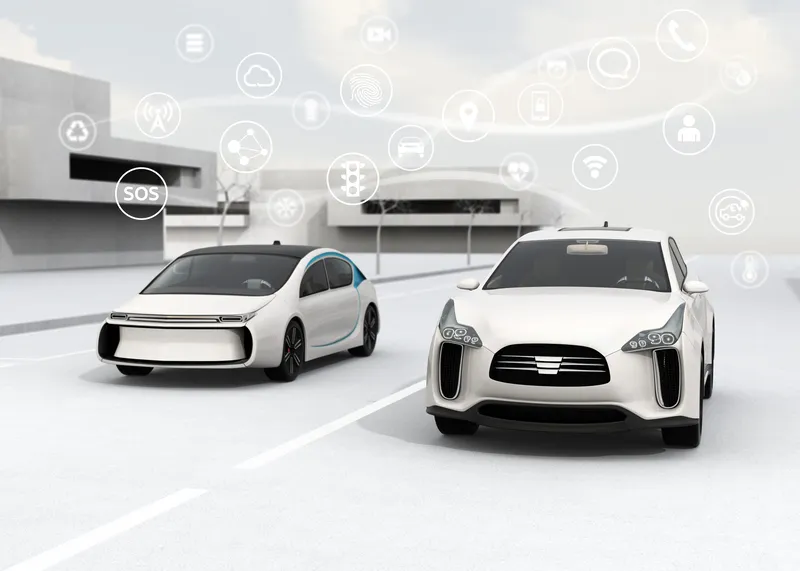Ethernet could be catalyst for bringing the automotive industry a step closer to connected vehicles. The latest report from Frost and Sullivan indicates that the need to integrate multiple consumer electronic devices into the car offering connected services and maintaining brand identity has led to a situation where original equipment manufacturers (OEMs) are shifting toward higher connectivity options which could power prioritised and personalised services, catering to varied consumer needs. With the parad
July 25, 2013
Read time: 3 mins
Ethernet could be catalyst for bringing the automotive industry a step closer to connected vehicles
The latest report from Frost & Sullivan indicates that the need to integrate multiple consumer electronic devices into the car offering connected services and maintaining brand identity has led to a situation where original equipment manufacturers (OEMs) are shifting toward higher connectivity options which could power prioritised and personalised services, catering to varied consumer needs. With the paradigm shift toward connected cars and associated services such as automotive-app stores and connected location based services, there is an ever-increasing need for higher data transfer bandwidths. Ethernet could serve as the backbone to the electronic architecture connecting domains and sub networks that require higher bandwidth and also cater to consumers’ need for connectivity.
Frost and Sullivan estimates that the total number of Ethernet ports globally will reach 300 million by 2020. The number of nodes or ports is expected to range from more than 100 in luxury cars, 50–60 in mass market segment cars, and less than ten nodes in entry level cars by 2020.
“Ethernet could be the catalyst for bringing the automotive industry a step closer to connected vehicles,” says Frost and Sullivan senior research analyst, Divya Krishnamurthy. “With its capability to simplify the networking architecture, higher uptake rates are expected in the near future.”
The bandwidth requirement for in-vehicle electronic applications, such as camera-assisted parking with advanced driver assistance systems (ADAS), lane departure warning systems, collision avoidance systems, and traffic light recognition is higher, in the range over 100Mbps. The number of nodes to be connected therefore is also higher. Most importantly, proven IP-based Ethernet technology enables OEMs to use a single-network platform by significantly reducing the connectivity cost and cabling weight. It is scalable and flexible enough to be used in multiple vehicle segments.
“OEMs are now working to bring in Ethernet into their future models that will fulfil all kinds of telematics and infotainment demands of end users,” says Ms Krishnamurty. “OEMs can benefit from the use of Ethernet to reduce connectivity cost and weight due to lighter cabling leading to better fuel economy.”
“It is also indicative that OEMs such as1731 BMW, 1684 Hyundai, 3883 Jaguar Land Rover, 948 General Motors, American 1683 Honda and 1900 PSA Peugeot Citroën are also part of the open alliance (one-pair Ethernet), a special interest group (SIG) to use Ethernet as a standard solution for infotainment and telematics,” concludes Ms Krishnamurthy.
The latest report from Frost & Sullivan indicates that the need to integrate multiple consumer electronic devices into the car offering connected services and maintaining brand identity has led to a situation where original equipment manufacturers (OEMs) are shifting toward higher connectivity options which could power prioritised and personalised services, catering to varied consumer needs. With the paradigm shift toward connected cars and associated services such as automotive-app stores and connected location based services, there is an ever-increasing need for higher data transfer bandwidths. Ethernet could serve as the backbone to the electronic architecture connecting domains and sub networks that require higher bandwidth and also cater to consumers’ need for connectivity.
Frost and Sullivan estimates that the total number of Ethernet ports globally will reach 300 million by 2020. The number of nodes or ports is expected to range from more than 100 in luxury cars, 50–60 in mass market segment cars, and less than ten nodes in entry level cars by 2020.
“Ethernet could be the catalyst for bringing the automotive industry a step closer to connected vehicles,” says Frost and Sullivan senior research analyst, Divya Krishnamurthy. “With its capability to simplify the networking architecture, higher uptake rates are expected in the near future.”
The bandwidth requirement for in-vehicle electronic applications, such as camera-assisted parking with advanced driver assistance systems (ADAS), lane departure warning systems, collision avoidance systems, and traffic light recognition is higher, in the range over 100Mbps. The number of nodes to be connected therefore is also higher. Most importantly, proven IP-based Ethernet technology enables OEMs to use a single-network platform by significantly reducing the connectivity cost and cabling weight. It is scalable and flexible enough to be used in multiple vehicle segments.
“OEMs are now working to bring in Ethernet into their future models that will fulfil all kinds of telematics and infotainment demands of end users,” says Ms Krishnamurty. “OEMs can benefit from the use of Ethernet to reduce connectivity cost and weight due to lighter cabling leading to better fuel economy.”
“It is also indicative that OEMs such as









